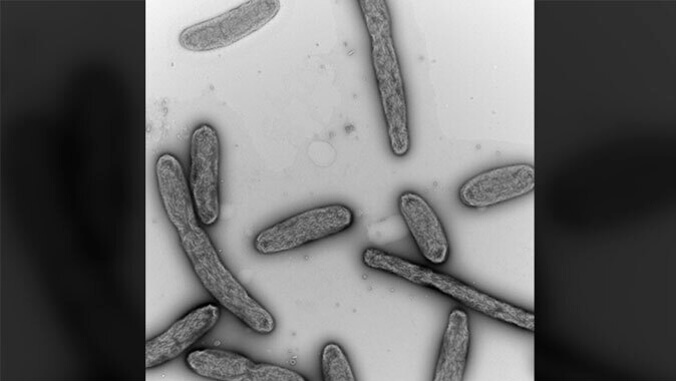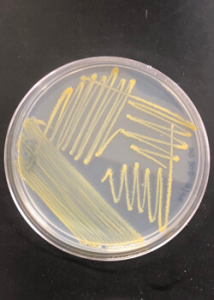
A new species of bacteria that was found in an air conditioner in Honolulu has been analyzed and named by researchers at the University of Hawaiʻi at Mānoa. This bacteria species isn’t harmful to humans, they said, but microbiome environments humans encounter on a daily basis may on rare occasions contain potentially harmful bacteria.
What is a microbiome?
The term microbiome often refers to the microbial community in a habitat, such as soil, seawater, on an animal or plant, on your skin or in your gut. A related term is “urban microbiome,” which refers to microbial communities in urban settings, such as gardens, water supplies and even in domestic appliances. Some microbes in the urban microbiome may cause health issues in some people, or corrode or block pipes, so identifying which microbes are present may help us protect human health and infrastructure.
Bacteria discovery

In 2016, Maxwell Darris, an undergraduate student at UH Hilo, joined the “Research Experiences for Undergraduates” summer program at UH Mānoa, funded by the National Science Foundation. In Professor Stuart Donachie’s lab in the Department of Microbiology, now part of the School of Life Sciences, Darris cultivated bacteria from a biofilm hanging from a pipe carrying condensed water from an air conditioner in Honolulu. One of the bacteria was a new species, which Darris and other researchers formally named as Chitinophaga pendula. The term “pendula” refers to how the biofilm was hanging from the pipe. Work to confirm Darris had found a new species was completed by Chiyoko Onouye, a graduate student in the Donachie lab.
More than 40 Chitinophaga species are known, most of which were first found in soils, with others from plant surfaces or roots, rocks, aquatic habitats and one from a human source. Darris’ discovery is the first new Chitinophaga species found in an air conditioner. The researchers said this shows that new microbial species are closer than people may think.
“Students’ continuing discoveries of new microbe species underscore that students from our local schools and universities can make a major impact in science,” Donachie said. “Work currently in review from our lab will provide more new species named by local school students. While taxonomy is often not considered the most exciting science, students always get excited when we tell them about new microbes. They would love to be involved, too, especially if it means getting to choose a name!”
The discovery was published in the International Journal of Systematic and Evolutionary Microbiology in August 2023.
Microbiomes in the home
While Chitinophaga pendula does not pose a threat to humans, Donachie said that discoveries of new microbes tell us something about the nature of life on Earth, about microbial diversity in terms of the number of different species we share the planet with, and about the adaptations or metabolic capabilities that make each species’ existence possible.
Everyone has microbiome environments in their home, such as sponges used to wipe or wash dishes, to cloths used to wipe counters or tables. Microbiomes also exist in refrigerators, dishwashers and toilets. If a space has a window-mounted air conditioner, there will almost certainly be a microbiome in the part where condensed water flows from the unit.
Donachie recommends washing and bleaching sponges and cloths used to wipe surfaces, making sure refrigerators are cleaned, and properly cleaning surfaces that food comes into contact with during handling or storage. Signs that should not be ignored are odors from cloths and sponges, slippery surfaces such as in showers, and unexpectedly slimy or furry textures on foods.
Others who contributed to the research included Rebecca Prescott, a UH Mānoa Department of Microbiology PhD graduate and NASA postdoctoral research fellow, now an assistant professor at the University of Mississippi; and Professor Hans-Jürgen Busse at the Institute for Microbiology, University of Veterinary Medicine, Vienna, Austria. The research was supported in part by a National Science Foundation “Research Experiences for Undergraduates Site” award to Donachie and Stephanie Kraft-Terry at UH Mānoa (Award number: 1560491).

